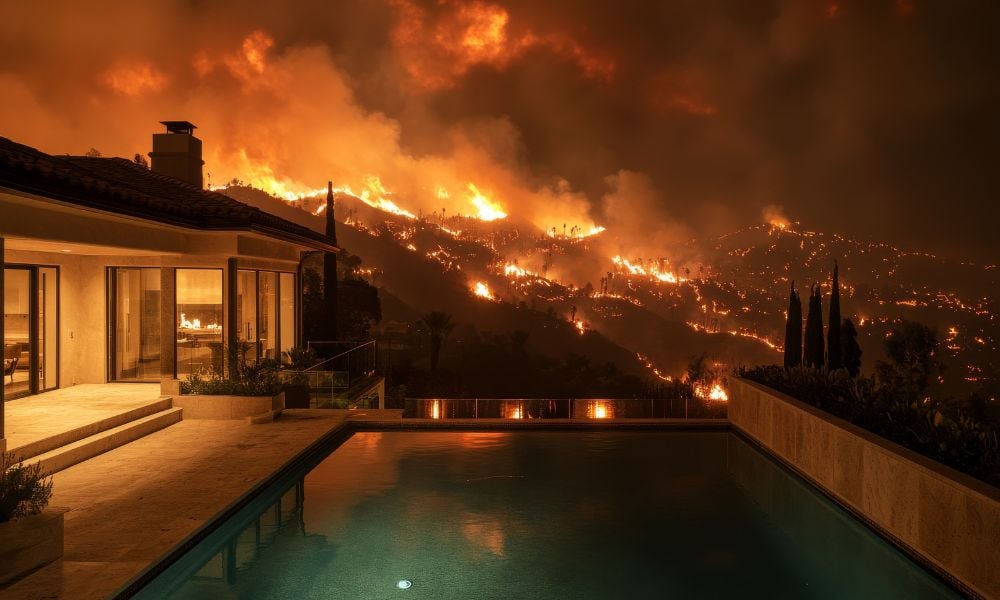Mortgage lenders and high-net-worth buyers rethink risk as extreme weather reshapes property values

As climate disasters intensify across the United States, high-net-worth buyers are increasingly factoring environmental risk into their real estate decisions – pushing lenders, developers, and agents in the luxury market to adapt.
The US experienced a record-breaking $128.2 billion in total weather-related damages in 2024 alone, according to the National Centers for Environmental Information. That toll has triggered a fundamental shift in the luxury real estate landscape, particularly in regions most vulnerable to wildfires, flooding, hurricanes, and extreme heat.
In Los Angeles, the effects are being felt in some of the city’s most prestigious zip codes. Neighborhoods such as Pacific Palisades and Altadena, long viewed as bastions of wealth and stability, are now grappling with increased wildfire threats. A recent report from the UCLA Anderson School of Management estimated $76 billion to $131 billion in property damage and capital losses in the area, with $45 billion in insured losses.
In response, homeowners and developers are pivoting toward climate-conscious design, embracing fire-resistant materials, resilient landscaping, and advanced smart-home systems aimed at protecting against extreme weather.
This trend isn’t confined to California. A 2024 Realtor.com report found that nearly 45% of all US homes, worth an estimated $22 trillion, are at risk of severe damage from environmental hazards such as wildfires, floods, and heatwaves.
Read more: California running out of places to build due to fires, rising seas
Collapsed deals
Mortgage professionals are seeing the impact firsthand, especially in areas where insurance markets have become unstable. In Colorado, for example, wildfires are no longer a seasonal concern – they’re a persistent threat, wiping out entire neighborhoods, and increasing insurance premiums dramatically.
“It’s a struggle, quite frankly,” said Justin Smith, senior mortgage banker at Cornerstone Home Lending. “There is no single silver bullet here.”
According to the Colorado Division of Insurance, some homeowners in mountain communities near Boulder, Colorado Springs, and Fort Collins have seen premium increases of up to 51% in the past year. In certain cases, insurers have stopped writing new policies altogether in fire-prone regions, leaving homeowners scrambling for coverage or turning to the state’s FAIR Plan—a limited last-resort option.
“That home represents our collateral for the loan,” Smith told Mortgage Professional America in a May interview. “We’ve got to have that thing insured.”
Without adequate insurance, lenders can’t approve financing, and deals collapse. In recent months, real estate agents in high-risk regions are now seeing deals fall apart simply because buyers cannot secure insurance.
Stay updated with the freshest mortgage news. Get exclusive interviews, breaking news, and industry events in your inbox, and always be the first to know by subscribing to our FREE daily newsletter.



